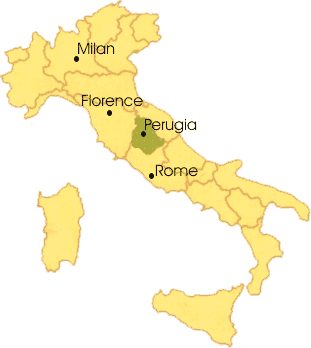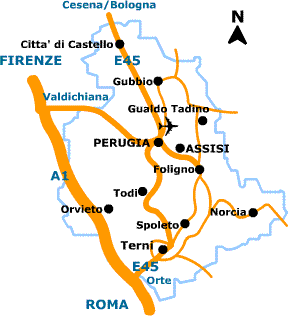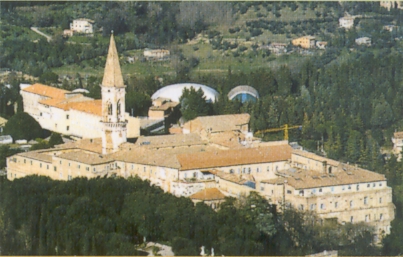

Perugia is the provincial capital of Umbria, located in the heartland of Italy about halfway between Rome and Florence (about 150 km away from both). It is an ancient hilltop town that has preserved its wonderful medieval character in the historic center, and is encircled by more modern areas in the lower regions. Perugia is a city rich in art, architecture and historical significance, as well as a place of learning with two distinguished universities and many academies of art and music. The city's Etruscan walls, medieval churches, renaissance and baroque palaces still witness splendor of the past. Piazza IV Novembre, backed by the Duomo, is the artistic city center. Here we find the Fontana Maggiore, with beautiful reliefs carved in the 13th century, the gothic cathedral, and one of the most stunning Italian medieval palaces, the ''Palazzo dei Priori'', which now houses the National Art Gallery of Umbria. Countless works of art and architecture are found throughout the city, including remarkable frescoes and paintings by Perugino, Pinturicchio, Guercino, Caravaggio, and Raphael.
Perugia is also lively and cosmopolitan. Life hinges on Corso Vannucci, the main street in the historic center, a broad pedestrian thoroughfare constantly buzzing with action. Over the years, the faculty and student populations at the universities, fans of the internationally famed Umbrian Jazz Festival, and visitors to the city's prestigious museum collections have all contributed to the rich and delightful culture of Perugia. Its central location, the vast art and historical treasures and educational resources, the many art and cultural exhibitions and the safe, student-friendly environment, make Perugia the ideal location for students to truly discover Italy. Perugia is also very near to popular cities like Assisi, Gubbio, and Orvieto.
Umbria is a landlocked, mountainous region with a typically Mediterranean climate: hot, dry summers and cold winters. In recent years winters have been considerably drier than in the past. The Apennine mountain range acts as a protection barrier from both the climatic influences of the Adriatic Sea to the north west and from the cold air currents descending from the the north east. The city of Perugia is located at a high altitude and can be cool in the evenings, even at the height of summer.
| Monthly average temperature (°C) | ||||||||||||
|---|---|---|---|---|---|---|---|---|---|---|---|---|
| Jan | Feb | Mar | Apr | May | Jun | Jul | Aug | Sep | Oct | Nov | Dic | |
| Max | 7.1 | 9.1 | 10.8 | 13.3 | 18.5 | 21.6 | 24.6 | 24.5 | 22.0 | 17.6 | 10.8 | 7.8 |
| Avg | 4.5 | 5.8 | 8.2 | 11.5 | 15.7 | 19.0 | 22.8 | 22.6 | 19.9 | 15.4 | 8.9 | 6.1 |
| Min | 2.6 | 3.1 | 5.0 | 10.3 | 13.6 | 17.3 | 21.5 | 20.1 | 17.0 | 13.1 | 6.6 | 3.3 |
For any other information about Perugia you can see:
 |
 |

The workshop will be held in the Aula Magna of the School of Agraria, at the University of Perugia. The School is near the historic "Basilica di S. Pietro". It can be reached in a few minutes by bus from downtown Perugia, where the majority of the conference hotels are located (Click here to see a map of Perugia). One can also enjoy walking through downtown to the conference site. This will take at most 20-25 minutes from any of the GD2003 hotels located in downtown Perugia. A shuttle service connecting the hotels to the conference location will be provided by the GD2003 organizers. Timetable and pick-up locations about this service will be given later.
The address of the School of Agraria is:
Borgo XX Giugno 74
06121 Perugia